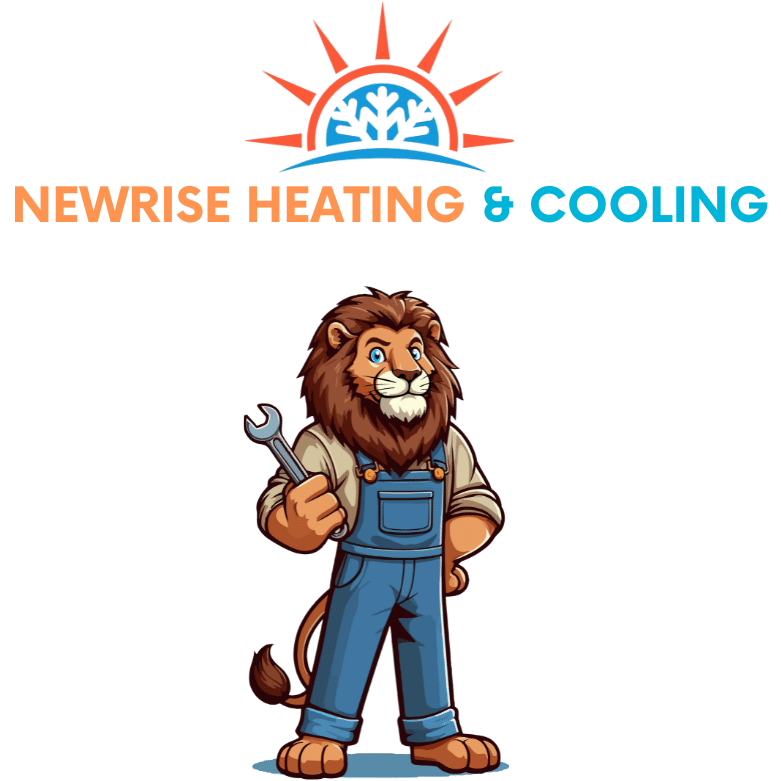Table Of Contents:
Is your heater not working as it should? You’re not alone! Many homeowners in Arlington and Fort Worth face common heater issues like strange noises, lack of heat, or even safety concerns. In this post, we’ll discuss key symptoms of heater malfunctions, safety issues such as gas leaks, and practical steps to troubleshoot these problems. By understanding these challenges, you can save time and money, ensuring your heating system runs smoothly. Get ready to learn how to identify issues with your air handler, assess the age of your equipment, and know when to call NewRise HVAC for expert assistance. Let’s dive in!
Key Takeaways
- Odd noises from your heater can signal deeper issues requiring immediate attention
- Regularly check and clean air filters to improve your heating system‘s efficiency
- A yellow pilot light may indicate unsafe combustion and should be addressed promptly
- Scheduling routine maintenance can prevent bigger heating problems down the line
- Inconsistent temperatures in your home may signal the need for a thermostat check or repair
Common Symptoms of Heater Malfunctions

If you notice odd noises coming from your heater, it might signal underlying issues. You’ll also want to keep an eye on thermostat problems that can affect how well your heating system works. An unexpected increase in energy bills and issues with dust or air quality can indicate malfunctioning components, like clogged air filters. Additionally, frequent cycling or delayed startup should not be ignored. Each of these symptoms can provide clues about what’s happening with your heating system. For reliable service, contact newrisehvac.
Odd Noises Indicate Underlying Issues
If you hear unusual noises from your heating system, it’s often a sign of a deeper problem. For example, grinding or rattling sounds could indicate an issue with the bearings in the motor or a loose component that needs tightening. It’s essential to pay attention to these sounds, as ignoring them can lead to more significant repairs down the road, potentially impacting your warranty.
Sometimes, odd noises may be accompanied by an unpleasant odor. This combination can point to a malfunctioning sensor that could cause the heating system to operate inefficiently. Be proactive and address these issues promptly to avoid unnecessary complications and keep your home comfortable throughout the season.
Another common sound is a high-pitched squealing, which usually indicates that the blower motor is struggling. Regular maintenance is key – take a moment to check for debris or blockages that might be affecting airflow. If the noises persist, it could be time to consult a professional to ensure your heating system is running safely and effectively.
Signs of Thermostat Trouble That Affect Heating
If your heater isn’t responding as expected, it could be due to thermostat issues. A malfunctioning thermostat may fail to communicate properly with the ignition system, resulting in inconsistent heating. Check if the thermostat is reading the correct temperature; an outdated or incorrectly calibrated device might send your heating system on unnecessary cycles, wasting energy.
Another thing to consider is the wiring connected to your thermostat. Loose or damaged wires can disrupt the flow of information between the thermostat and your heating unit, leading to problems with heating efficiency. If you notice that your heater is cycling on and off too frequently, it might be worth checking the wiring connections to avoid further water heater problems down the line.
Don’t forget the importance of a carbon monoxide detector when dealing with heaters. If your system is malfunctioning, there might be safety risks at play. For peace of mind, double-check that your detector is functioning correctly, especially if your heating system uses duct work that could potentially harbor unsafe exhaust. Keeping everything in check helps ensure a comfortable home while maintaining your safety.
- Inconsistent heating can result from thermostat malfunctions.
- Check for loose or damaged wiring connected to the thermostat.
- Keep your carbon monoxide detector functioning to ensure safety.
Increase in Energy Bills as a Warning Sign
If you’ve noticed a sudden spike in your energy bills, it may be a clear sign that something is wrong with your heating system, especially if you rely on furnaces or central heating. This increase can indicate that your furnace is working harder than it should due to inefficiencies or malfunctions. Addressing this issue quickly not only saves you money but also helps maintain a comfortable living environment.
Dust and Air Quality Problems Related to Heater Function
When your heater isn’t functioning properly, dust can accumulate around the unit and in the air. This buildup not only affects air quality but can also create a burden on your heating system, making it work harder to maintain desired temperatures. If you notice an increase in dust settling on your furniture or an unpleasant musty smell, you may want to check if your heating system needs a good cleaning or if air filters need replacement.
Calibration issues can also arise if dust or debris clogs openings or vents. A heater that struggles to draw in enough air will have to push harder against resistance, leading to potential wear and tear over time. Ensuring that all wall vents are clear and that components are clean can significantly improve efficiency and comfort in your home.
Moreover, metal parts, particularly fans or blowers, can become less efficient if dust settles on them. Addressing this by regularly inspecting and cleaning these components can enhance performance and extend the life of your heater. If you encounter persistent air quality issues or dust problems, consulting a professional could be the best next step to keep your system running smoothly.
Understanding Frequent Cycling or Delayed Startup
If your heater frequently cycles on and off or struggles with delayed startups, it could be due to a variety of factors. One common issue is a malfunctioning thermostat, where inaccurate readings may cause the system to kick in and out more often than needed. This not only affects your comfort but can also lead to unnecessary energy costs.
An overloaded circuit breaker may also contribute to these issues; if it trips, your heater might not receive consistent power, causing it to run intermittently. Additionally, when a heater operates in a crawl space, it may not get adequate airflow, increasing the chances of these cycling problems. Regular inspections of electrical connections and airflow can help pinpoint the root cause.
In some cases, a power outage can reset your heater’s settings, leading to delayed startups after the power is restored. For effective heater troubleshooting, ensure that all components are in good condition and properly connected, including any plastic parts that may wear out over time. Addressing these common issues will keep your heating system running smoothly this winter:
- Check the thermostat settings for accuracy.
- Inspect the circuit breaker for overloads.
- Ensure proper airflow in crawl spaces.
- Look for any issues with plastic components.
- Consult a professional if problems persist.
When heaters fail, they can create dangerous situations. Understanding these risks helps keep you safe and warm.
Safety Concerns With Heaters
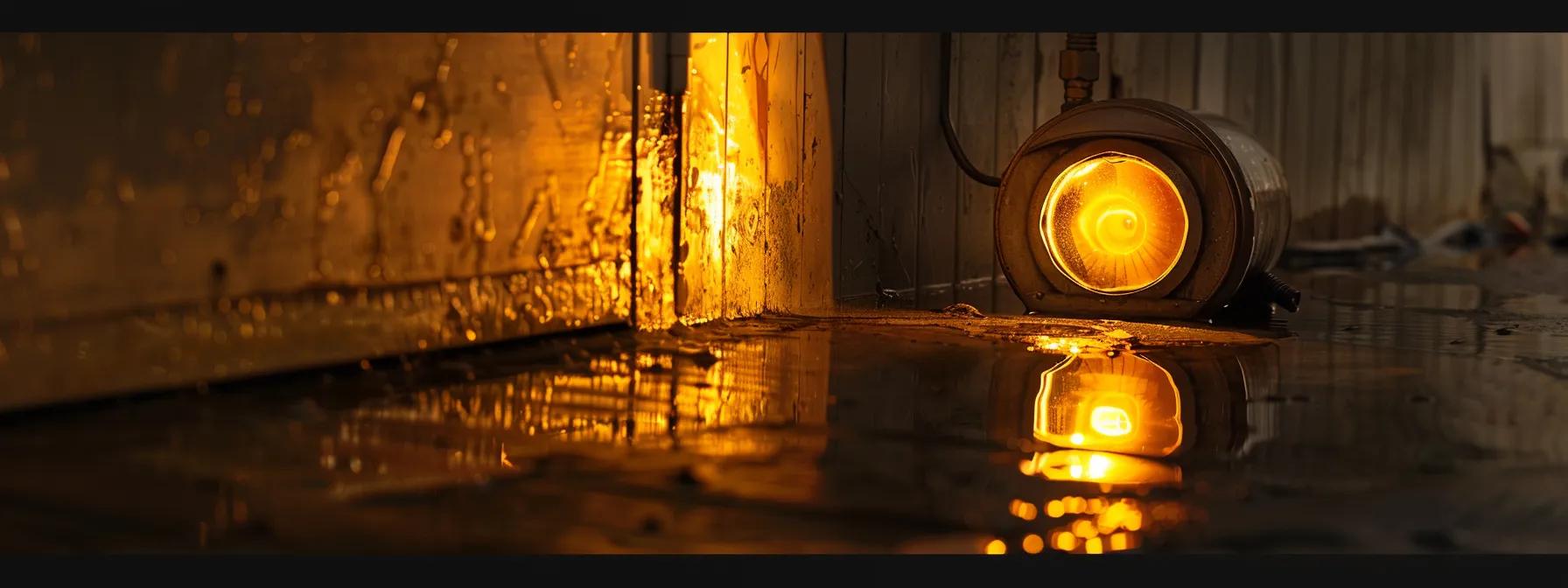
Understanding safety concerns with heaters is key to ensuring your home stays cozy without risks. If your pilot light is yellow, that might indicate trouble, while pooling water around the unit could hint at leaks. Recognizing the smell of gas is crucial for fast action, and weak airflow can impact your system’s performance. Let’s break down these topics for simple solutions.
What to Do if Your Pilot Light Is Yellow
If your pilot light is yellow instead of blue, it can be a sign of incomplete combustion, which could indicate a potential issue with your natural gas supply. You should pay attention to this change, as it can mean unsafe carbon monoxide levels may be present. To protect your home and loved ones, addressing this promptly with the help of an HVAC contractor is a smart move.
First, turn off your furnace and check the air filter for blockages that could inhibit airflow. An obstructed air filter can lead to poor combustion and contribute to a yellow pilot light. If cleaning or replacing the filter doesn’t resolve the issue, ensure your ventilation system is functioning correctly, as impaired ventilation can cause similar problems.
Lastly, it’s important to understand any float switch mechanisms involved. If the float switch is malfunctioning, it may affect your heating system‘s performance, potentially leading to a yellow pilot light. If you’ve tried basic troubleshooting and the yellow light persists, don’t hesitate to call a professional to diagnose the root issue:
- Check the pilot light color; yellow indicates a problem.
- Inspect and clean or replace your air filter.
- Ensure proper ventilation in your heating system.
- Look for issues with the float switch if applicable.
- Consult an HVAC contractor for persistent issues.
Addressing Pooling Water Around the Unit
When you notice pooling water around your heating unit, it’s essential to act quickly. This moisture might indicate a problem that could affect your heating system‘s performance and safety. It could be caused by a faulty motor capacitor or issues with condensation buildup, especially in specific climates where humidity is high. Regular inspections can help you identify these issues early, preventing costly heating repair later on.
Sometimes, pooling water can result from a malfunctioning thermocouple in your gas furnace. If this component fails, it can lead to improper operation and leaks. To address these issues effectively, it’s good practice to frequently check for leaks in your heating system and ensure all connections are secure, as well as examining the overall condition of your furnace for any signs of wear.
Be proactive in monitoring your heating system and address any pooling water immediately. This vigilance reduces the risk of further damage and keeps your home safe. If you’re unsure about fixing this on your own, don’t hesitate to contact a professional. Remember, a little attention now can save you from significant headaches down the line:
- Check the area around your heating unit for leaks.
- Inspect the motor capacitor for functionality.
- Look for issues with the thermocouple in your gas furnace.
- Consider the climate‘s impact on condensation buildup.
- Contact a professional if you need assistance.
Recognizing the Smell of Gas and Taking Action
If you detect a gas smell near your heating unit, don’t ignore it. This odor could mean there’s a problem with the gas supply line, possibly a leaking pipe. It’s essential to act quickly because gas leaks can lead to dangerous situations, including carbon monoxide exposure.
In the event of a gas smell, your first step should be to turn off the heater and any other gas appliances, such as your water heater or sump pump. Ventilate the area by opening windows and doors to allow fresh air in. Avoid using electronic devices or creating sparks, as this could ignite the gas.
Once you’ve ensured everyone is safe, reach out to a professional HVAC technician. They can assess the situation and identify any heater problems requiring immediate attention. Taking quick action can prevent further risks and ensure the safety of your home and family:
- Turn off the heater and other gas appliances.
- Ventilate the area by opening windows and doors.
- Avoid using electronics or creating sparks.
- Contact a professional HVAC technician for assessment.
Weak Airflow and Its Impact on Performance
Weak airflow can seriously impact the efficiency of your home heating system. When there’s not enough air movement, your furnace may struggle to deliver heat, leading to uneven temperatures and extra strain on the system. This can ultimately cause increased energy bills and shorten the lifespan of your furnace, so catching it early is key.
Common culprits for weak airflow often include debris blocking vents or issues with your HVAC filters. If you’re dealing with clogged filters, consider checking them regularly and replacing them as needed. Keeping your filter clean helps maintain proper airflow, allowing your heating system to work efficiently and effectively.
Don’t forget to look at your furnace switch as well; if it’s turned off or malfunctioning, it can contribute to poor airflow. Regular inspections and maintenance can help you catch issues before they become bigger problems. By taking these proactive steps, you ensure your heating system runs smoothly and keeps your home cozy all season long.
Old heaters tell tales of wear. Understanding their age can save you from colder nights.
Age-Related Issues With Your Heating System
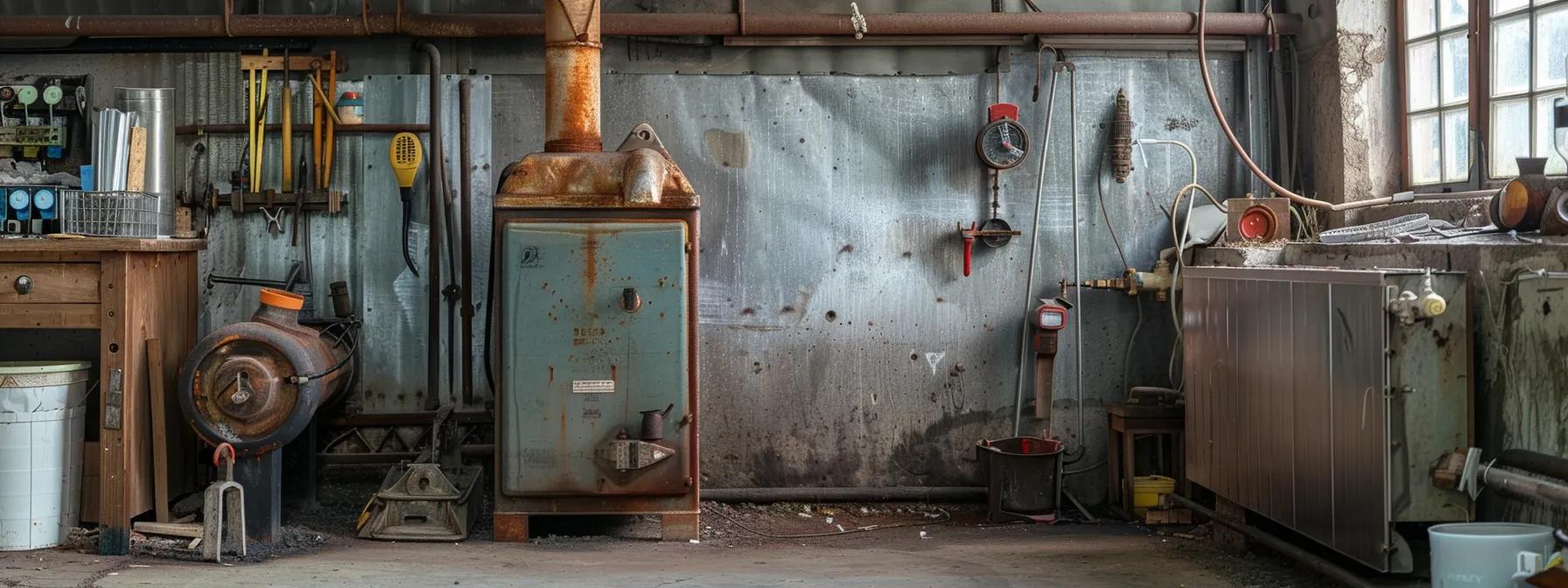
Age-Related Issues With Your Heating System
As your heating system ages, its efficiency can take a hit, leading to higher energy bills and noticeable noise. Common repairs for older models often involve checking valves and fuses to ensure everything operates smoothly. Additionally, keeping an eye out for signs of mildew or other issues can help you determine if an upgrade might be necessary for optimal performance.
How Age Affects Heater Efficiency
Your heater’s age plays a big role in its efficiency. As the years go by, parts can wear out, making your system work harder to keep your home warm. This often leads to increased energy bills and can be a good reason to consider heater repair or professional heating services to get things back on track.
With older heaters, you might also notice drainage issues, such as condensation or leaks. These problems can affect how well your system operates and could lead to moisture buildup on your carpet or walls. Keeping an eye out for these signs can help you address potential problems before they escalate.
If you spot a yellow pilot light instead of a blue one, it’s a sign your heater might not be burning fuel properly, which is more common in aging units. Regular maintenance is vital to ensure your heater runs efficiently and safely. By staying proactive with inspections and repairs, you can keep your heating system functional and extend its lifespan.
Common Repairs for Older Heating Systems
Older heating systems, like furnaces and heat pumps, often encounter common repairs due to wear and tear. You might find that components wear out, leading to furnace problems such as inconsistent heating or odd noises. Regular checks can help you catch these issues early, saving you from more significant repairs later on.
Another area to pay attention to is the thermostat. If your heating system isn’t responding correctly, the thermostat could be malfunctioning and may need recalibration or replacement. Ensuring your thermostat is functioning properly can significantly impact your heating system‘s performance and efficiency.
Electrical wiring issues are also a factor in older heating systems. Over time, connections can become loose or damaged, resulting in unreliable operation. If you experience frequent cycling or a complete shutdown, it’s a good idea to have a qualified technician inspect the electrical wiring, as this can help keep your heating system running smoothly.
Signs That an Upgrade May Be Necessary
If you’re noticing inconsistent room temperatures throughout your home, it might be a signal that an upgrade is needed. Over time, a heating system can lose its ability to effectively warm different areas, leading to cold spots despite your thermostat being set. This uneven heating indicates wear on your pump or other components, suggesting it’s time to consider more efficient options.
Another sign to pay attention to is a rise in your electric bill. If you find that your energy costs have increased without a change in usage, your heating system might be working harder due to wear and tear, such as electrical voltage issues. It may no longer be running as efficiently as it once did, leading to waste and prompting thoughts about an upgrade.
Lastly, odd noises from your heater can signal deeper problems with its performance. If you hear grinding or squealing sounds frequently, it could mean internal components are wearing out. In some cases, these noises indicate that repairs won’t cut it anymore, and looking into a new heating system might be your best course of action:
- Inconsistent room temperatures could signal wear.
- High energy bills might indicate inefficiencies.
- Odd noises from your heater can suggest it’s time for an upgrade.
Aging systems can bring unexpected troubles. Let’s break down the steps to fix these common heater problems so you can keep warm.
Steps to Resolve Common Heater Problems
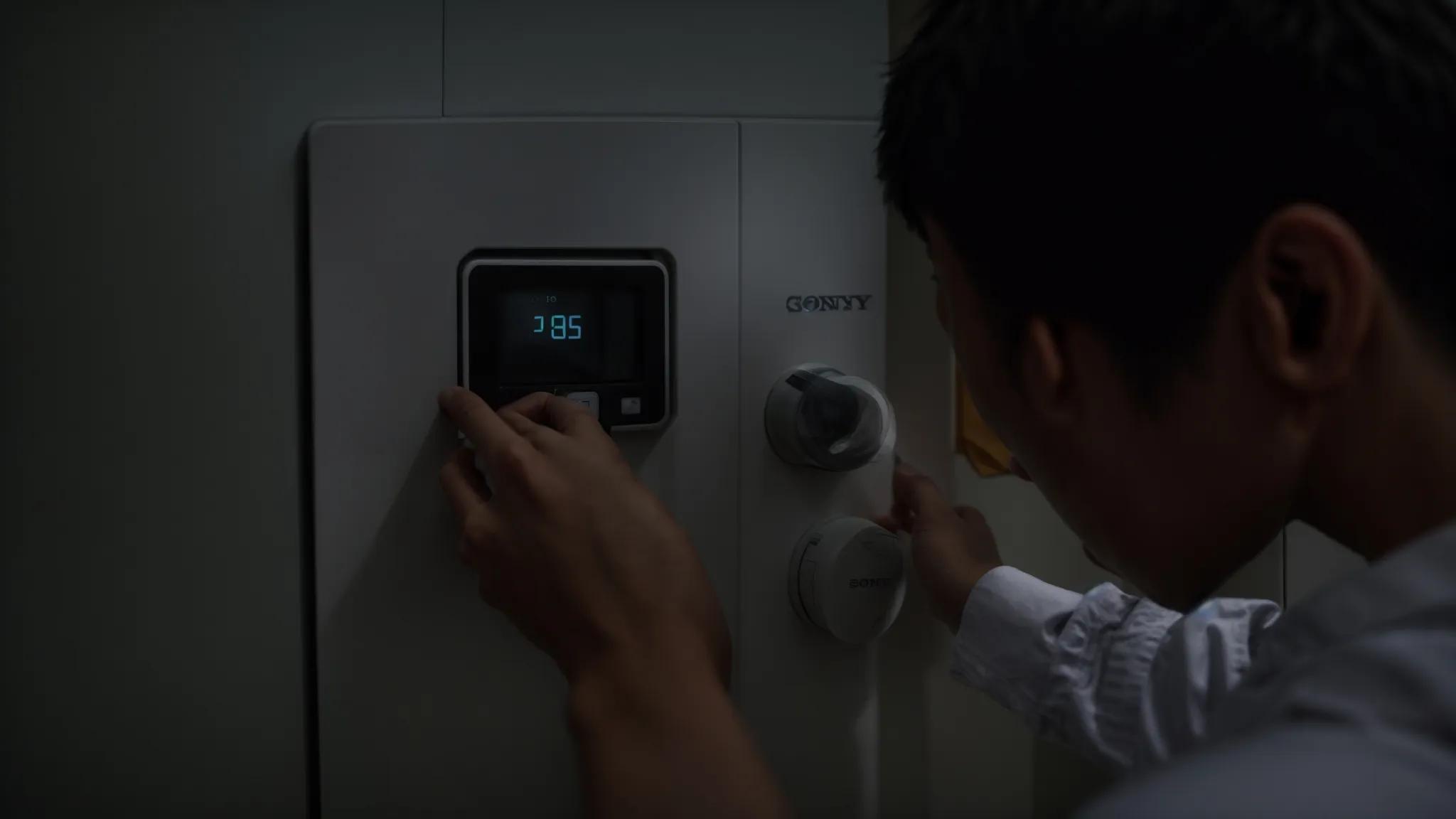
To tackle common heater issues, start by checking and adjusting your thermostat for accurate temperature readings. Next, changing or cleaning the air filters helps improve airflow and efficiency. Make sure the gas supply is intact to keep your heat pumps and compressors running smoothly. Finally, inspecting and clearing vents and ducts will prevent airflow obstructions and potential corrosion in your HVAC system.
Checking and Adjusting Your Thermostat
When it comes to keeping your home comfortable, checking and adjusting your thermostat is a crucial first step. Make sure your thermostat is set to the desired temperature and that it responds accurately. If the readings are off, you might be dealing with common furnace problems or issues related to the limit switch, which could affect your heater’s performance.
If you notice that your spaces are still too cold or too warm, look into recalibrating your thermostat or checking its placement. A poorly positioned thermostat can cause heating inconsistencies, leading to condensation issues and affecting your indoor air quality. Make adjustments as needed, and observe if it helps stabilize the temperature in your home.
Regular maintenance, including cleaning around the thermostat, is essential. Dust and pollutants can interfere with its functionality, resulting in poor temperature control. These simple actions can significantly help your heating system operate efficiently and contribute to healthier indoor living conditions:
| Action | Purpose | Outcome |
|---|---|---|
| Check Temperature Settings | Ensure optimal heating | Better comfort and efficiency |
| Recalibrate Thermostat | Accurate readings | Consistent temperatures |
| Clean Surroundings | Avoid dust buildup | Improved indoor air quality |
Changing or Cleaning the Air Filters
Changing or cleaning your air filters is one of the simplest yet most effective steps you can take to resolve heating issues in your home. When snow starts piling up outside, you want to ensure your HVAC system is ready to keep your space warm without struggling. Dirty filters can cause your heating engine to work harder, leading to inefficiencies and higher energy bills.
Over time, filters can accumulate dust, soot, and other debris, restricting airflow and compromising your heating system‘s performance. If you notice that your home isn’t heating evenly or if your energy bills are rising, it’s worth checking your filters. Regular maintenance like this can help prevent more significant problems, ensuring your heater runs smoothly through the cold season.
To maintain a comfortable environment, aim to change or clean your filters every 1 to 3 months, particularly during high-use seasons. A clean filter not only improves the efficiency of your HVAC system but also contributes to better air quality inside your home. With proper care, you can help your heating system perform at its best, making your living space cozy, even when the snow is falling outside.
Ensuring Gas Supply Is Intact
To ensure your furnace is operating smoothly, the first step is to check the gas supply. If you’re using propane, make sure your tank isn’t running low, as this can lead to heating issues. It’s a good idea to monitor your fuel levels regularly, just like you would with the fuel in your vehicle, to avoid unexpected outages.
Next, inspect the flue pipe connected to your furnace. This component plays a crucial role in venting gases safely outside your home. If the flue pipe is blocked or damaged, it can affect your furnace‘s performance and create safety hazards, making this check an essential part of your maintenance routine.
Lastly, take a moment to examine the capacitor, as it helps regulate the power supply to your heating system. If this part is faulty, it can cause the furnace to malfunction or fail to start altogether. Keeping an eye on all these elements will help ensure that your heating system runs efficiently, providing you with comfort when you need it most.
Inspecting and Clearing Vents and Ducts
Inspecting and clearing your vents and ducts is vital for maintaining your heating system‘s efficiency and performance. Over time, dust, dirt, and even sediment can accumulate, creating blockages that lead to common heater problems, such as inconsistent heating or reduced airflow. By taking the time to check these areas, you can often spot issues before they develop into costly repairs.
Make sure to look for any visible obstructions around your vents, including furniture or clutter, which can impede airflow. Additionally, using a programmable thermostat can help manage your heating more efficiently, but if your ducts are blocked, even the best technology can’t perform at its best. Regular inspections can reveal areas where you need to vacuum or clean, helping to ensure that warm air circulates freely through your home.
If you notice a musty smell or an unusual amount of dust in your living space, it might be time to get your ducts professionally cleaned. This simple step can greatly improve your indoor air quality and reduce the likelihood of heater problems. Plus, a clean system works more efficiently, potentially lowering your energy bills and extending the life of your heating system.
Sometimes, your heater needs more than a simple fix. Let’s talk about the signs that tell you it’s time to call in the professionals.
When to Seek Professional Help
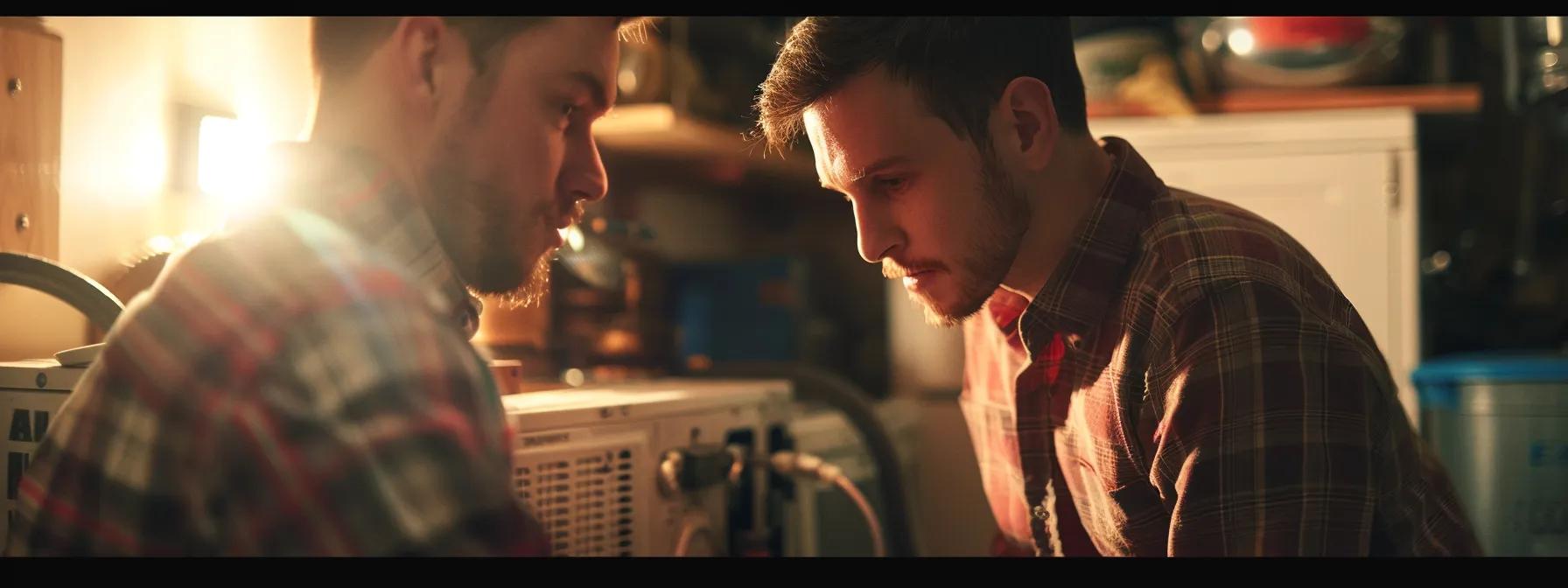
Knowing when to call in a professional can save you time and money. If you notice issues with combustion, a malfunctioning heat exchanger, or problems with refrigerant, it’s time to seek expert help. We’ll discuss understanding which situations require a technician, weighing costs for repairs versus replacement, and tips for finding the right HVAC professional for your needs.
Addressing furnace troubleshooting and air conditioning challenges can feel overwhelming, but you don’t have to handle it alone. Let’s dive into the essential points that will guide you on the path to effective solutions.
Identifying Situations That Require a Technician
If your heating unit is struggling to keep your home warm, despite setting the thermostat properly, it’s time to call in a technician. Frequent freezing temperatures can put added strain on your system, leading to inefficient performance and discomfort. Ignoring this issue might make your living space uncomfortably cold, so addressing it with professional help can save you from bigger problems down the line.
Another situation that warrants a technician‘s assistance is the presence of moisture around your heater. Excess humidity can indicate condensation problems or leaks that should not be ignored. This moisture can cause further damage to your heating unit or create mold issues in your home, making it crucial to get expert insight sooner rather than later.
Pay close attention to any unusual noises or smells coming from your heating system. If your heater is making odd sounds or you detect gas or burning odors, seek professional help right away. These signs can signal serious safety concerns, and a technician will be able to diagnose the problem accurately, providing the necessary repairs to keep your home safe and comfortable.
Cost Considerations for Repairs Versus Replacement
When considering whether to repair or replace your heating system, cost is a big factor. If your heater needs minor adjustments, like fixing a fault in the flame or a simple part replacement, it’s usually more budget-friendly to go with repairs. However, if you’re facing repeated breakdowns or if the repairs start to pile up, it might be worth looking into a full replacement to save on future costs and stress.
Another thing to think about is the efficiency of your heating system, especially when looking at age. If your older heater is consuming more energy and you’ve noticed a rise in your energy bills or if it’s not efficiently drawing from the water supply due to clogged pipes, a new model could be a better investment. New systems tend to be more energy-efficient, which can translate into lower costs over time, making them a smarter long-term choice.
Safety should also be a top priority. If there are signs of carbon monoxide leaks, or if issues like blocked chimneys are detected, it can pose serious dangers. In these cases, upgrading to a newer, safer model is often the best route to take, ensuring your home remains comfortable without any health risks.
- Evaluate repair costs versus long-term savings.
- Consider the efficiency and age of your system.
- Prioritize safety, especially with risks like carbon monoxide.
Finding the Right HVAC Professional for Your Needs
Finding the right HVAC professional for your heater repairs can feel overwhelming, but focusing on a few key aspects can make the process simpler. Start by seeking professionals who have experience with electric heating systems and know how to optimize airflow. Their knowledge can help ensure your heating system works efficiently and meets your specific needs.
Don’t hesitate to ask potential technicians about their qualifications and experience. A contractor who understands the pressures of various heating systems and can identify issues quickly will prove invaluable. Look for customer reviews and ask for recommendations from neighbors or friends to find someone reputable and trusted in your local area.
Once you have a few names in mind, contact them to discuss your concerns and gauge their responsiveness. Good communication is crucial when dealing with heater issues, so you’ll want a professional who listens and addresses your questions. Ultimately, finding someone who fits well with your specific heater needs can make all the difference in ensuring your home stays warm and comfortable during the colder months.
You’ve learned how to recognize when it’s time to call in the experts. Now, let’s look at how you can keep your heating system running smoothly for years to come.
Preventive Measures for Long-Lasting Heating

Regular maintenance is key for keeping your heater running smoothly and avoiding common problems. You’ll learn essential tips to prepare your heater for the changing seasons, ensuring optimal performance all year round. It’s also smart to recognize signs that your system may need more frequent maintenance to address issues before they escalate. These practical insights will help you maintain a cozy home atmosphere.
Regular Maintenance Tips to Avoid Common Issues
One of the easiest ways to keep your heater running well is by scheduling regular maintenance checks. Having a professional come in to inspect your system can catch potential issues early before they turn into bigger headaches. For instance, routine cleaning of the air filters helps maintain airflow, making your heating system work more efficiently.
Another important step is to keep the area around your heater clear and accessible. This not only allows for proper airflow but also makes it easier for a technician to perform maintenance when needed. If furniture or clutter is blocking vents or the unit itself, it can lead to reduced efficiency and increased energy bills.
Finally, take some time to familiarize yourself with your heating system’s manual. Understanding the manufacturer’s recommendations for routine maintenance and care can give you valuable insights into how to keep your heater running smoothly. By being proactive and knowledgeable about your system, you can help ensure it provides reliable warmth all winter long.
Seasonally Preparing Your Heater for Optimal Performance
Preparing your heater for the changing seasons is a smart move to ensure optimal performance. Start by checking your air filters and replacing or cleaning them if they’re dirty. This simple task helps maintain good airflow, allowing your heating system to work efficiently and effectively.
Next, make sure to inspect and clear any debris around the heater, vents, and ducts. This includes removing furniture or clutter that could impede airflow. Keeping these areas clear allows warm air to circulate freely throughout your home, preventing hot and cold spots.
Lastly, consider scheduling a professional maintenance check at least once a year. A technician can spot potential issues before they become major problems. Taking these preventive measures will help you maintain a cozy atmosphere during the colder months:
- Replace or clean air filters regularly.
- Clear debris around your heating system and ducts.
- Schedule annual professional maintenance checks.
Signs That Maintenance May Be Needed More Frequently
If you’ve noticed your heating system running less efficiently lately, that could be a strong indicator that maintenance is needed more often. When your heater begins to struggle, it’s working harder to keep your space warm, which can lead to higher energy bills. Regular inspections help catch these issues early on, making it easier to maintain a comfortable home without breaking the bank.
Unusual noises can also be a sign that you should schedule maintenance sooner rather than later. If you hear grinding, squealing, or banging sounds, your system may have components that need attention. Addressing these noises promptly can prevent further damage and ensure your heater operates smoothly during those chilly months.
Pay close attention to changes in temperature throughout your home. If certain areas are colder than others or you find yourself adjusting the thermostat more frequently, it may signal something isn’t quite right. Increased maintenance frequency can help tackle these uneven temperatures, keeping your space warm and cozy without the hassle.



